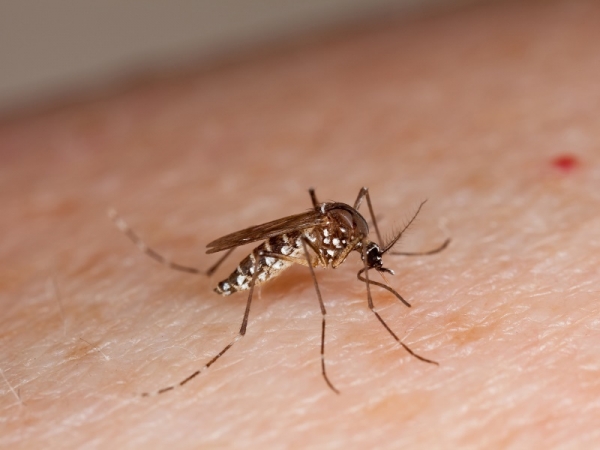Few facts about Mosquito-borne Zika Virus in India
There is an alarming spread of the Zika virus in various parts of the world by the Aedes aegypti mosquito that is also the carrier of dengue, yellow fever and chikungunya viruses. The outbreak which is spreading fast across the globe due to human alterations of their environments. Scientists and Ecologists state can empower disease-carrying organisms such as Aedes, and the viruses can eventually add on in various forms.
Zika virus is an emerging mosquito-borne virus that was first identified in Uganda in 1947 in rhesus monkeys through a monitoring network of sylvatic yellow fever. It was subsequently identified in humans in 1952 in Uganda and the United Republic of Tanzania. Outbreaks of Zika virus disease have been recorded in Africa, the Americas, Asia and the Pacific. Papers published by National Institute of Virology (NIV), in Pune in 1950’s, by a team of experts and the published paper in 1953, indicates that India is also prone to Zika Virus attacks. They conducted tests on the exposure of Indians to 15 insects-borne diseases, one of which was by the Zika virus. It was found that ‘significant numbers’ of people were exposed to the virus as early as in the 1950s, even before the first official registering of a case of humans in Nigeria in 1954. Only thirty-three of the 196 people tested for the disease had immunity to it. The NIV had concluded in their paper that “It, therefore, seems sure that Zika virus attacks human beings in India.”
Malaria, dengue and chikungunya affected 1.13 million people in India last year. For a decade, the number of reported confirmed cases of malaria is nearly 1.87 crore, and the number of reported deaths due to Malaria case in India is approximately 12,000. At the outset, last year dengue cases and deaths had reached an all-time high in India with 97,000+ cases and 200 deaths in 2015 itself. Our country bears an enormous burden of mosquito-borne diseases, contributing 34 per cent of global dengue and 11 per cent of global malaria cases and with mosquito-borne diseases like Malaria, Dengue and Chikungunya being widespread in the country for many decades, India should focus how to handle the scenario in case the Zika virus outbreak.
The virus is transmitted by the same mosquitoes that carry other tropical viruses such as dengue and yellow fever. Global health officials are alarmed because of its potential link to brain defects in infants as well as a rare syndrome that can lead to paralysis. The Centers for Disease Control and Prevention (CDC) notes that because the Aedes species mosquitoes that spread Zika virus are found throughout the world, it is likely that outbreaks will spread to new countries”. The Zika virus is carried by mosquitoes and people but spread by mosquitoes. A few recent studies indicate that Zika continues to be an STD (Sex Transmitted Disease) too. Zika is an RNA virus related to West Nile, yellow fever, and dengue viruses, and caused by the bite of the Aedes mosquito.
According to WHO (World Health Organisation), Symptoms of Zika virus infection is usually mild. The most common Zika virus symptoms are fever and rash; it can also cause muscle and joint pain, headache, pain behind the eyes, and conjunctivitis (itchy, red eyes). Unborn babies and pregnant women are most at risk. Healthcare workers in Brazil were stunned to learn that, throughout all of 2015 and up to the present, there have been more than 3,500 total new microcephaly* cases that were suspected to be caused by Zika — more than 20 times higher than the numbers in prior years.
The blood-sucking pest has been just increasing with of lot environmental issues, and human intervention with the environment and the dense population of the country also need to be blamed for the rise in the unhygienic way of lifestyle. Mosquito-borne diseases just spread in, no matter in a particular geographical and before the medical intervention/ control of the scenario it just outbreaks into nuke and corner.
So, the best way of handling the bloodsucker by an individual is to manage our environment. Here are few listed preventive measures to avoid the growth of mosquito and it’s borne disease:
- Source reduction: Keep the containers such as flower pots, birdbaths, pet water dishes, cans, gutters, tires and buckets free of water storage to avoid the mosquito breeding cycle.
- Screen & Avoid: Possible ways of mosquitoes entering homes through doors, windows- Keep them netted / pre-close during the morning and evening session.
- Proper Clothing & Netting: Make sure you keep away from mosquito bites by wearing full-covered clothes. Use nets/ mosquito repellent while you sleep/ during travel.
- Environmental Survey of Locality: Report the unused swimming pools, abandoned lake/pond zones in your area to authorities for proper/regular maintenance. Park zone equipment should not cater to mosquito breeding.
[plain]About the Author:
 Vinay Kumar. C is an Environmental Researcher at NRCLPI – The National Referral Centre for Lead Poisoning in India. He is a multi-skilled professional having an excellent track record of managing complex functional projects in various environments. [/plain]
Vinay Kumar. C is an Environmental Researcher at NRCLPI – The National Referral Centre for Lead Poisoning in India. He is a multi-skilled professional having an excellent track record of managing complex functional projects in various environments. [/plain]
DISCLAIMER : Views expressed above are the author’s own.





1 comment